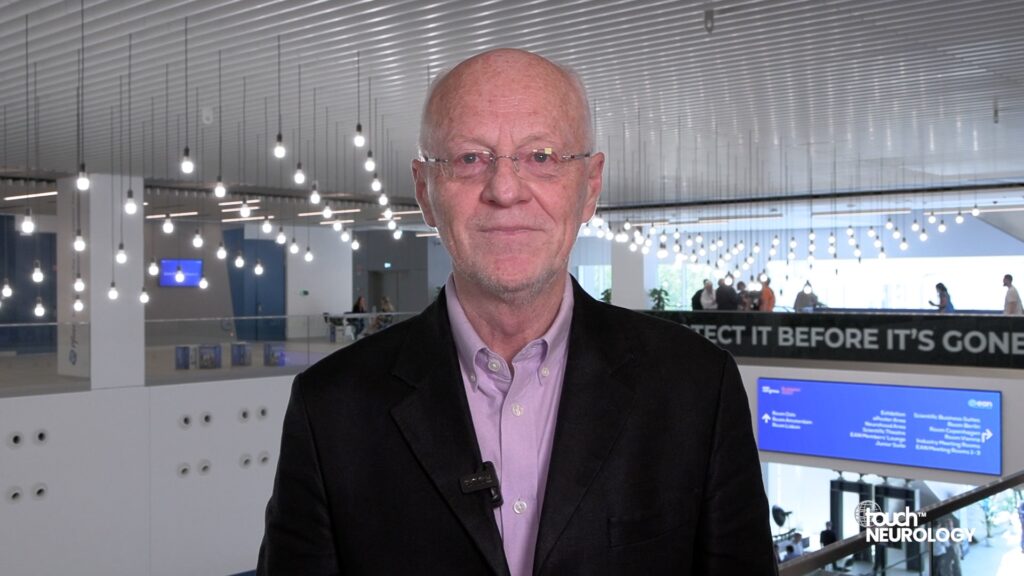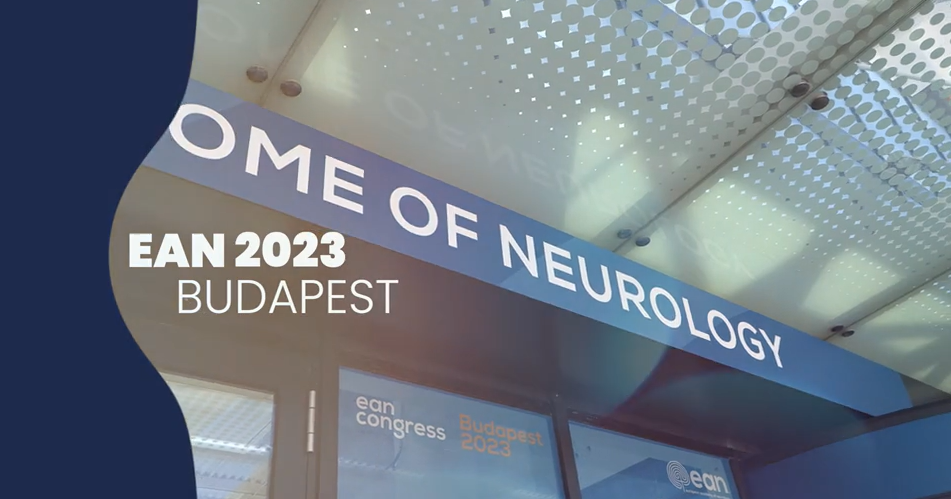Atogepant represents a relatively new class of medications called CGRP receptor antagonists, which have shown efficacy in preventing migraines. The PROGRESS phase 3 clinical trial assessed the efficacy of atogepant, an important new oral treatment option for the 8% of people with migraine who live with chronic migraine. Prof. Richard Lipton (Albert Einstein College of Medicine, New York City, NY, USA) joins us to discuss the current unmet needs, current treatment options for chronic migraine and the latest results from the PROGRESS phase 3 trial.
Acknowledgements to Dr Patricia Pozo-Rosich (Vall d’Hebron University Hospital; Vall d’Hebron Institute of Research, Universitat Autonoma of Barcelona, Barcelona, Spain) who was the first author for the platform and for the paper.
The abstract entitled ‘Atogepant for the preventive treatment of chronic migraine: results from the PROGRESS phase 3 trial‘ (Abstract #52839) was presented at the American Academy of Neurology (AAN) annual meeting, April 22-27, 2023.
Questions:
- What are the unmet needs in the treatment of chronic migraine? (0:18)
- What is atogepant and what is its mechanism of action? (1:33)
- What are the aims, design, and eligibility criteria of the study? (2:20)
- What were the primary and secondary endpoints and how well were they achieved? (3:25)
- What will be the likely clinical impact of these findings? (5:14)
- What questions remain unanswered and what future studies are planned? (6:35)
Disclosures:
Richard Litpon is a consutlant for: Abbvie (Allergan), American Academy of Neurology, American Headache Society, Amgen, Avanir, Axsome, Biohaven, Biovision, Boston Scientific, Dr. Reddy’s (Promius), Electrocore, Eli Lilly, eNeura Therapeutics, Equinox, GlaxoSmithKline, Grifols, Lundbeck (Alder), Merck, Pernix, Pfizer, Satsuma, Supernus, Teva, Trigemina, Vector, Vedanta; receives grant/research support from the NIH: 2PO1 AG003949 (mPI), 1RF1 AG057531 (Site PI), RF1 AG054548 (Investigator), 1RO1 AG048642 (Investigator), R56 AG057548 (Investigator), RO1 AG060933 (Investigator), RO1 AG062622 (Investigator), 1UG3FD006795 (mPI), 1U24NS113847 (Investigator), U01 AT011005 (Investigator), 1R01 AG075758 (Pending – Investigator), 1R01 AG077639 (Pending – Investigator), K23 NS107643 (Mentor). He also receives support from the Migraine Research Foundation and the National Headache Foundation and research grants from TEVA, Satsuma and Amgen; on advisory boards for: Abbvie (Allergan), American Academy of Neurology, American Headache Society, Amgen, Avanir, Axsome, Biohaven, Biovision, Boston Scientific, Dr. Reddy’s (Promius), Electrocore, Eli Lilly, eNeura Therapeutics, Equinox, GlaxoSmithKline, Grifols, Lundbeck (Alder), Merck, Pernix, Pfizer, Satsuma, Supernus, Teva, Trigemina, Vector, Vedanta; recevies honoraria/honorarium from: Abbvie (Allergan), American Academy of Neurology, American Headache Society, Amgen, Avanir, Axsome, Biohaven, Biovision, Boston Scientific, Dr. Reddy’s (Promius), Electrocore, Eli Lilly, eNeura Therapeutics, Equinox, GlaxoSmithKline, Grifols, Lundbeck (Alder), Merck, Pernix, Pfizer, Satsuma, Supernus, Teva, Trigemina, Vector, Vedanta; Major Stock Shareholder in Biohaven, and Manistee; and receives royalties from Wolff’s Headache 7th and 8th Edition, Oxford Press University, 2009, Wiley and Informa.
Support: Interview and filming supported by Touch Medical Media. Interview conducted by Katey Gabrysch.
Filmed as a highlight of AAN 2023
Access more content on migraine and headache disorders here
Transcript
I’m Dr Richard Lipton. I’m a Professor of Neurology at the Albert Einstein College of Medicine, and also Director of the Montefiore Headache Center.
What are the unmet needs in the treatment of chronic migraine?
Of everyone with migraine, about 8% of people have chronic migraine and broadly chronic migraine is characterized by migraine with headache occurring 15 or more days per month. Because the attacks are so frequent, chronic migraine is the most disabling form of migraine and associated with major disruptions in ability to work, enjoy family life, as well as social, and leisure activities. There are a number of approved treatments that include chronic migraine, those include injectable CGRP monoclonal antibodies, as well as onabotulinum toxin A. But the new class of migraine therapies used for both acute and preventive treatment are called gepants, and prior to this study of atogepant, there was no evidence that gepants were effective in the preventive treatment of chronic migraines, so this study fills a major gap.
What is atogepant and what is its mechanism of action?
Atogepant is a CGRP small molecule receptor blocker that’s taken by mouth. In the context of chronic migraine, the dose that will be available is a 60mg dose once daily, gepants target CGRP just like the monoclonal antibodies, but they have benefits that kick in relatively quickly, and for many people being able to take a tablet by mouth rather than relying on injections is viewed as a major advantage.
What are the aims, design, and eligibility criteria of the study?
PROGRESS study was designed to assess the efficacy of atogepant in the preventive treatment of patients with chronic migraine. Eligible people met the international classification of headache disorders criteria for chronic migraine and were enrolled in a double blind randomized placebo control parallel group study.
There were two doses of atogepant studied 30mg twice a day and 60mg once a day because efficacy differences between the thirty BID and 60mg once daily doses were minimal only the 60mg dose will be available on the basis that it’s more convenient to take a medication once a day than twice a day.
What were the primary and secondary endpoints and how well were they achieved?
So the primary endpoint was change in monthly migraine days over the first 12 weeks of treatment, and there was a statistically significant reduction in monthly migraine days for the atogepant 60 group versus the placebo, there was a 6.9 day reduction in monthly migraine days on average over the first 12 weeks of treatment and the placebo subtracted reduction in monthly headache days was one point eight days. That’s a large magnitude of reduction.
A key secondary endpoint in the study is the proportion of people who achieved at least a 50% reduction in monthly headache days. And the 50% responder rate for atogepant was 41%, and the 50% responder rate for placebo was 26%, and again, those differences were highly statistically significant.
There were all those statistically significant benefits demonstrated for the 60mg dose on a variety of other endpoints It had statistically significant benefits in the first month of treatment, and that’s an advantage over many oral migraine preventative medications where dose escalation is necessary, and the benefits take longer to be achieved.
What will be the likely clinical impact of these findings?
I think the evidence that atogepant is effective, in the preventive treatment of chronic migraine will influence current clinical practice. The major evidence based alternatives include a number of oral generics, injectable CGRP monoclonal antibodies, and onabotulinum toxin A. Relative to the oral generics, atogepant has a rapid onset of action and a favorable tolerability profile. Many of the oral generics produce significant side effects that limit use and also require weeks of dose adjustment to get the dose optimized relative to the monoclonal antibodies and onabotulinum toxin A. The simple advantage of atogepant is that you get benefits taking the pill once a day rather than having a series of injections every three months with onabotulinum toxin A or monthly injection with most of the monoclonal antibodies. So there are a number of issues that remain to be explored.
What questions remain unanswered and what future studies are planned?
One issue is the benefit of atogepant in particular subgroups, migraine with or migraine without aura, there is a group of people with chronic migraine who have headaches absolutely every day, and that would be a useful group to study. Benefits in groups, with and without allodynia, might be useful to study as well, and we don’t have a lot of information on the role of atogepant when given in combination with other acute treatments or other preventive treatment. So there are CGRP targeted small molecule receptor blockers that are available for the acute treatment of migraine.
One is ubrogepant, and for ubrogepant, we know that there are no clinically important interactions with ubrogepant and to toe Japan, but we don’t have a lot of data on the efficacy of ubrogepant when given on top of atogepant, rimegepant, which is approved as both an acute and preventive medication has not yet been studied in chronic migraine and nor has its use on of atogepant prevention as of yet been studied. So we still have a lot to learn but this is a very exciting development and provides an important new oral treatment option for the 8% of people with migraine who suffer from the most severe form namely chronic migraine.
Subtitles and transcript are autogenerated








